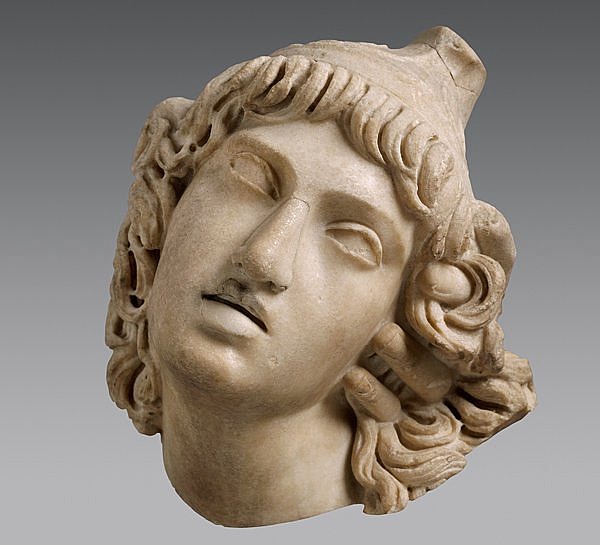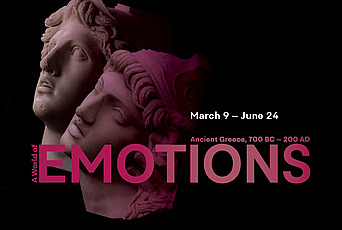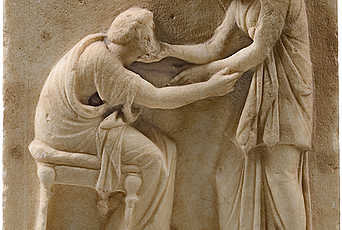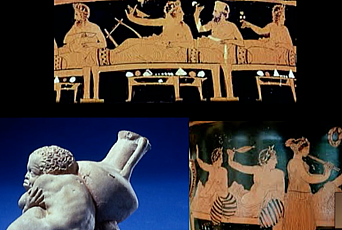
“A World of Emotions’’ in Greek Art Unmasks the Stony Faces
The first line of one of the oldest poems in Western literature, Homer’s “Iliad,” begins with the ancient Greek word for anger, or superanger: wrath. And from that emotion an entire epic driven by hatred, hubris, lust, grief and violence spins out. . . .
These feelings are now the subject of a strange and wonderful exhibition, “A World of Emotions: Ancient Greece, 700 B.C.-200 A.D.,” at the Onassis Cultural Center New York in Midtown.
. . . Searching faces for conventional modern signs of emotions won’t get you far. Despite the occasional laughing or scowling face, most Greek public sculpture before the fourth century B.C., shares a demeanor of grave restraint. Restraint, considered the product of thought-through emotion, had moral value in Greek Classical tradition. As ever-more-remote inheritors of that tradition, we may acknowledge this value historically, without relating to it. In our own age of nonstop noise and cartoon politics, that old restraint is what makes this art feel at once exemplary and alien.
But is it really so alien? And, for that matter, is it really so restrained? The exhibition, organized by Angelos Chaniotis, Professor in the School of Historical Studies, Ioannis Mylonopoulos, Member (2011–12) in the School, and Nikolaos Kaltsas, argues no.
Read more of Holland Cotter's review in the New York Times.


